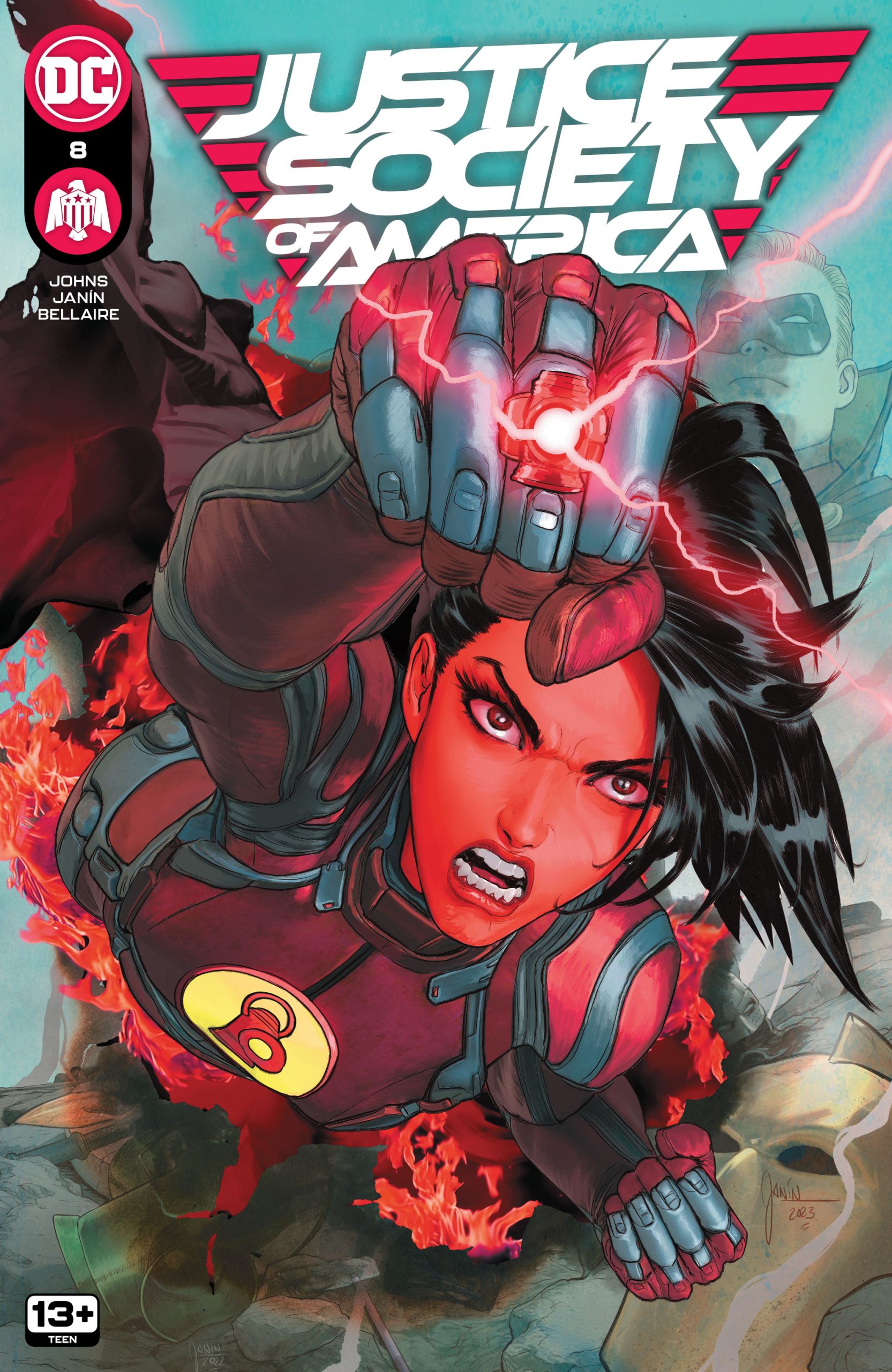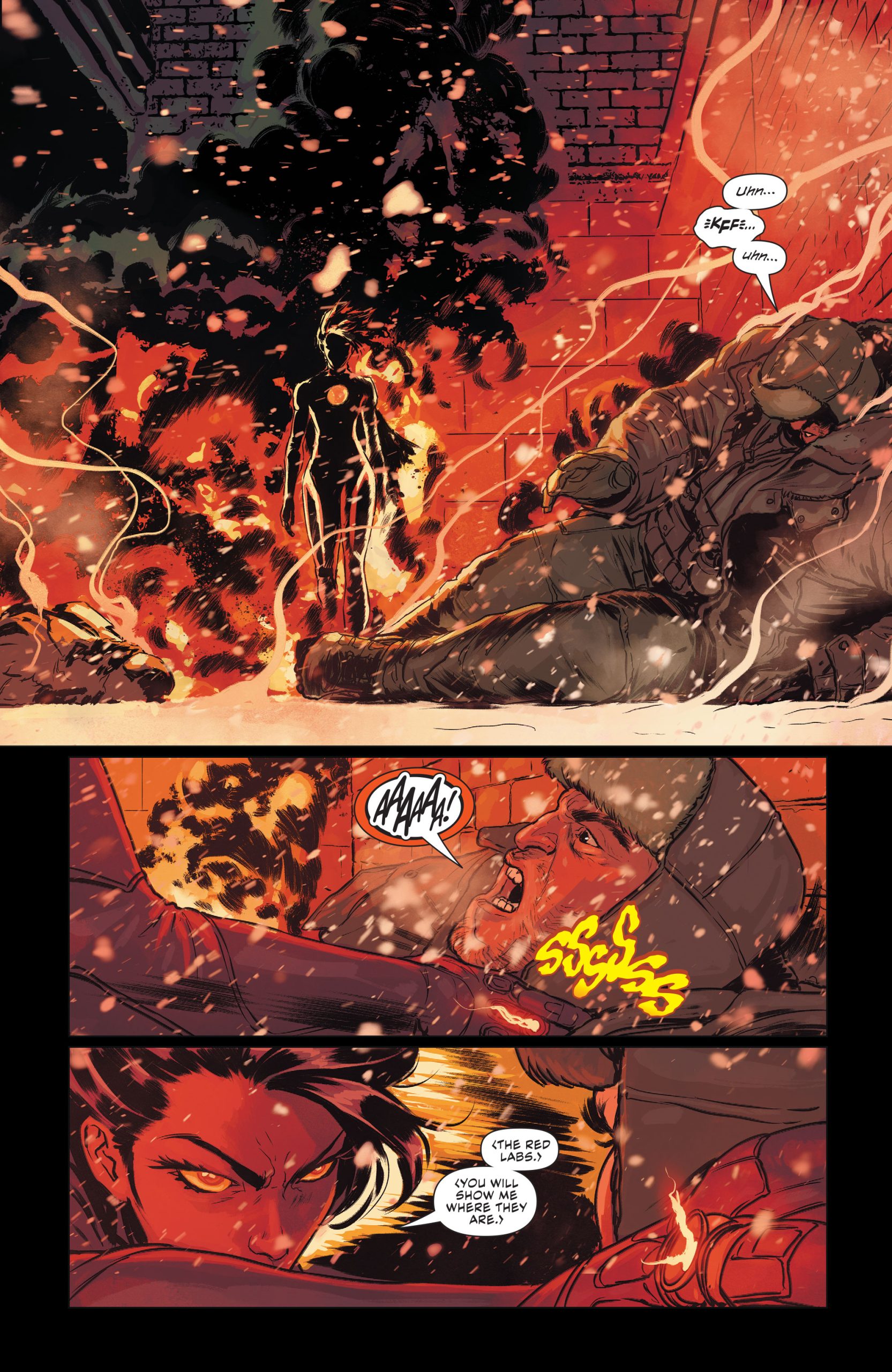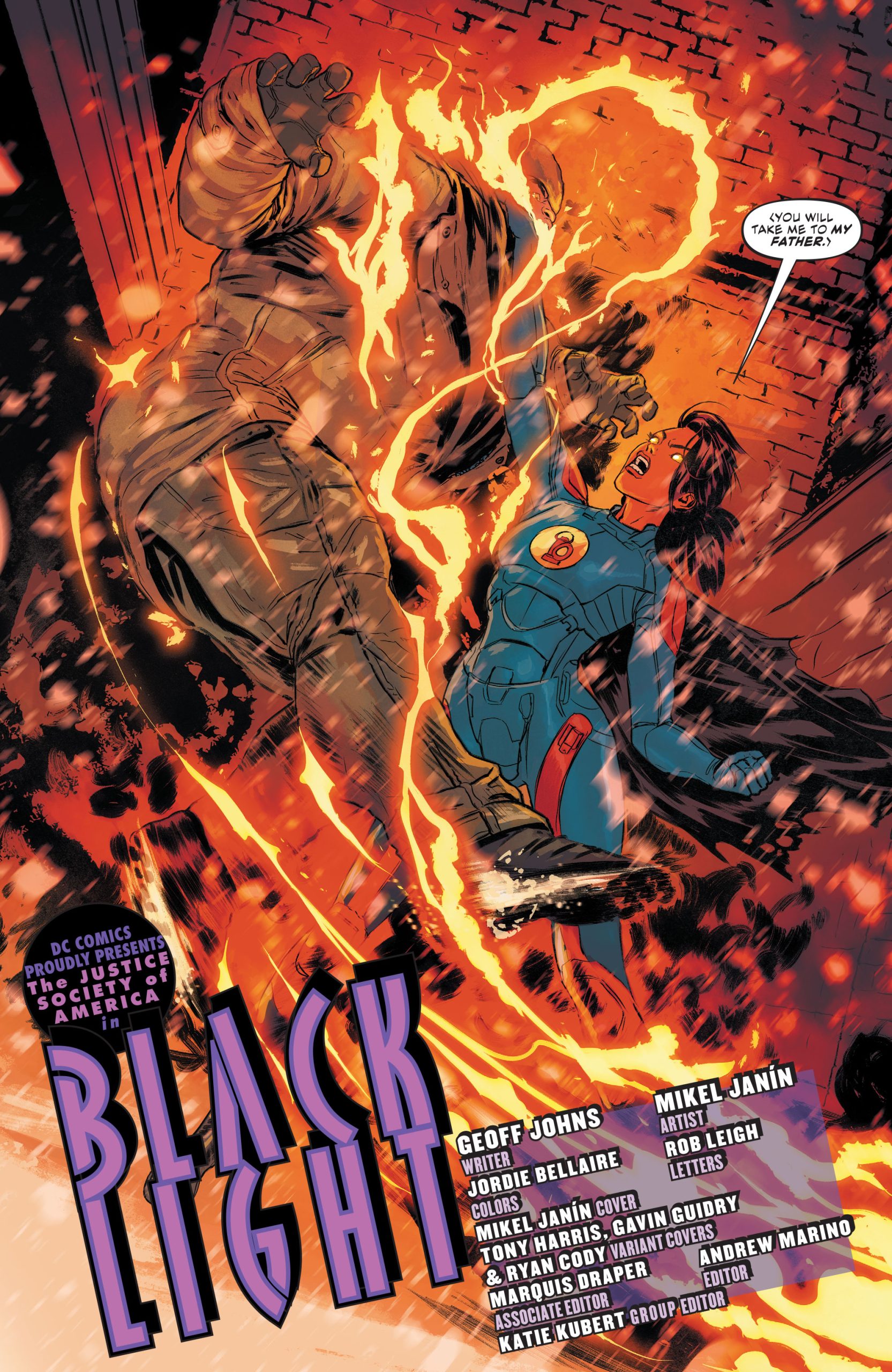Review: Justice Society of America #8 [Editor’s Note: This review may contain spoilers]
[Editor’s Note: This review may contain spoilers]
Writer: Geoff Johns
Art: Mikel Janin
Colors: Jordie Bellaire
Letters: Rob Leigh
Reviewed by: Matthew B. Lloyd
Summary
It’s a spotlight on Ruby Sokov as Helena tries to convince the team she’s worth saving while Alan Scott tries to convince Helena she’s an unrepentant criminal like her father.
Positives
As Geoff Johns continues building this world of “the new Golden Age,” a couple things become clear. This isn’t completely unlike Earth-Two in the Bronze Age under writers like Gerry Conway, Paul Levitz and Roy Thomas. These writers were filling in gaps, adding to back stories and introducing characters that fleshed out the histories of the Earth-Two heroes that had been around since the 1930 ‘s and 40’s. And secondly, Johns is doing it with a strong focus on character, be it characters we are familiar with like Helena Wayne or new characters like Ruby Sokov or old characters with new histories like Alan Scott. Even if Alan’s new history conflicts with the stories that old readers have come to love, Johns finds a way of making it interesting. He is able to do the “how” well no matter the “what.”

So much of this series has been about relationships, but Justice Society of America #8 may be the most character focused issue so far as Johns highlights various relationships as he weaves in a question and a mystery. Again, it’s the “how,” not the “what.” The question Johns has Helena Wayne posit concerns her motivations for attempting to recruit the villains of her future in the present in order to save them. The mystery concerns Alan Scott, Ruby Sokov and the Golden Age Red Lantern, Ruby’s father. Ruby already has questions about her father- is he dead or alive? Alan tries to convince her he’s dead, but as he unknowingly reveals something to Ruby. It’s not spelled out here, but reading the clues like Alan’s over concern about Ruby and what Ruby senses, it seems that Alan and Vladimir (Ruby’s father) weren’t just enemies, but also had a romantic relationship at some point. For further reading on this topic, check out Alan Scott: The Green Lantern #3, also out this week.

Positives Cont’d
Mikel Janin returns on art this issue, and it’s a real blessing that this series has featured Janin, Jerry Ordway and Marco Santucci. All three of these artists have made wonderful contributions to the series and they are all do a great job. You can’t just pick one! Janin imbues Ruby with a real personality in his depiction from the cover and through the issue. She’s not naturally likable from the script, but Johns and Janin have created something deeply intriguing about her that’s hard to escape.
The final pages reveal the identity of the Legionnaire who is probably the Golden Age Legionnaire teased back in The Golden Age #1. It’s a cool reference for fans of the Legion of Super-Heroes. No spoilers, but one can’t help wonder if Johns will find a way to work in this character’s classic history into the broader scope of things in order to give new relevance to the classic stories. That’s a bit obtuse, but it’s worth being surprised on the last page for the full reveal.

Negatives
If there’s a negative in Justice Society of America #8, it’s not necessarily for this particular issue, but rather the approach to rewriting the Golden Age. I mentioned the Silver and Bronze Age approach to developing the Golden Age characters above. There’s a difference between how Conway, Levitz and Thomas did things and what we are getting in “the new Golden Age.” Those Bronze Age creators worked very hard to build on things that already existed from the Golden Age and add things that made sense with the characters and they tried very hard not to write things that would contradict major aspects of the characters’ histories. Roy Thomas even wrote stories that attempted make sense of contradictory stories from the Golden Age and stories that explained oddities from the era. There was a real reverence for what had gone before and a genuine attempt to make almost all of it work together.

In much of Johns work he’s tried to do similar things. Johns is probably not spearheading the rewriting of Alan’s history, but something he’s got to deal with in this series. The approach to Alan Scott in this current era appears to ignore nearly everything significant that’s happened to him from the ’80’s and beyond and instead of making his Golden Age appearance a basis for his character they are just very basic ideas to touch on instead of elements of substance that have a bearing on his character. I believe it’s fair to say that this Alan Scott is a new version of the character, it’s not pre-Crisis or post-Crisis Alan with a “reveal,” but simply a new version of the character and it’s probably best to think of it that way. Though the details are different, it’s similar to Wesley Dodds, the Sandman before and after Sandman Mystery Theater. This history developed for Wesley in that series has become the history, though it contradicts things from the Golden Age, Silver Age and Bronze Age that were done with the character. If there’s a difference in these situations, it’s that the newest changes wrought on Alan’s history change things that were genuinely interesting and progressive whereas Wesley’s original past was generally bland and one-dimensional.
Verdict
Justice Society of America #8 is another excellent issue and in some ways perhaps the best of the series. Mikel Janin turns in another wonderful job on art and Geoff Johns continues building his world with interesting and engaging character aspects for Ruby, Helena and Alan. It’s a can’t miss issue with the Legionnaire reveal at the end.
